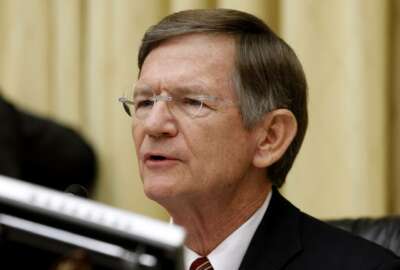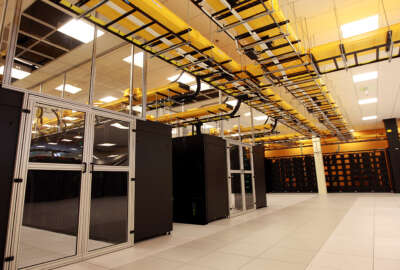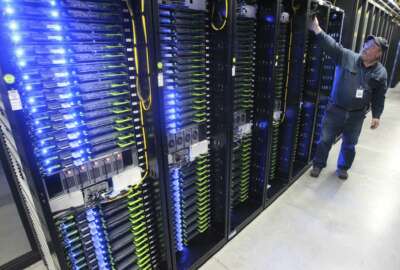
Energy Dept. reorganization gets mixed reviews from lawmakers
Not all lawmakers are behind Energy Secretary Rick Perry’s recent decision to overhaul the department.
Not all lawmakers are behind Energy Secretary Rick Perry’s recent decision to overhaul the department.
In December 2016, Perry reversed an Obama-era decision to merge the positions of undersecretary of science and undersecretary of energy. The positions had been combined by Secretary Ernest Moniz in 2013 in order to facilitate collaboration and oversight of the national laboratories, which were split between the two departments.
“This new structure will support American energy dominance, enhance our energy and national security, and improve outcomes in environmental management while ensuring DOE remains the leader in scientific innovation,” Perry said during a Dec. 15 secretarial town hall meeting.
And some lawmakers, like House Science, Space and Technology Chairman Lamar Smith (R-Texas) and Rep. Ralph Abraham (R- La.), welcomed the overhaul.
“This reorganization restores the statutorily directed role of each undersecretary, prioritizing the science and energy missions within DOE. This approach refocuses DOE civilian research programs on the basic and early-stage research that industry cannot perform,” Smith said in the opening statement of a Jan. 30 hearing on DoE’s management and priorities.
But others, like Rep. Marc Veasey (D-Texas), aren’t so sure.
“In my view, the reorganization led by Secretary Moniz made a lot of sense,” Veasey said. “Having a single secretary for science and energy enabled improved coordination and collaboration across DoE’s non-military research enterprise. Specifically, it helped break the historical unproductive stovepipes between the DoE’s Science and Applied Energy offices. So, it is not clear to me why breaking them up into separate pieces under different secretaries is a step in the right direction.”
Undersecretary of Energy Mark Menezes said the idea was to concentrate personnel and resources on energy security and enable more innovation and early-stage research to take place under a more focused hierarchical structure.
“By utilizing all forms of our nation’s energy resources, we can achieve energy security and economic strength at home and energy dominance through exports to markets abroad,” Menezes said.
Both Menezes and Paul Dabbar, undersecretary for science, emphasized that the new structure requires regular collaboration and coordination for laboratory planning purposes to align priorities, infrastructure investments.
Menezes also pointed out in his testimony that the modernization effort would return the department to its statutory framework, with three undersecretaries.
But Rep. Don Beyer (D-Va.) took issue with this characterization, quoting from both the 1977 Department of Energy Organization Act that created the department, as well as the 2005 Energy Policy Act. According to those, Beyer said, all research and development functions within DoE should be within the purview of the undersecretary of energy, whereas now they fall under science.
“Can you explain why duties that are assigned specifically in statute to the undersecretary of science are now under the authority of the undersecretary of energy, and how do you both claim that this is consistent with duly statutory mandate when it moves us farther from what the statute says?” Beyer asked.
But Menezes, who was previously the chief counsel for the House Committee on Energy and Commerce, said it was never the intent of Congress, while drafting the Energy Policy Act, to have energy components of the department under the purview of the undersecretary for science, because the whole idea was for the science components to have their own separate structure.
Budget Cuts
Some lawmakers also expressed concern over hefty budget cuts affecting the DoE, such as a 17 percent cut to the Office of Science, with the rationale that the private sector would pick up the R&D slack.
“These proposed cuts make no sense at all,” Veasey said. “As many of my colleagues have pointed out before, we won’t balance our budget by slashing our research funding. For an insignificant short-term deficit reduction, we will make the United States less competitive, lose jobs, harm our public health, and hobble our international R&D partnerships.”
And Rep. Ed Perlmutter (D-Colo.) expressed his concerns as to how certain components would continue their functions under such hefty budget cuts.
“My fear, from one administration to the next, there’s going to be ebbs and flows … and that’s ok. My fear is after these big tax cuts that we just passed … that your department is going to be under siege to cut like crazy. Currently, the [Office of Energy Efficiency and Renewable Energy] budget goes from $2.7B to $636M. That’s a 70 percent cut. That’s a little more than the ebb and flow from one administration to the next,” he said.
But Menezes and Dabbar said the budget cuts would simply require a reassessment of priorities.
“I had my first captain when I was on a submarine say ‘the real mark of leadership is not having unlimited things to work with but doing the best you can with the resources you’re given.’ And that’s how I’ve always looked at my life,” he said. “The reality is the office of science has an almost unlimited set of things it could go after. And every single day, no matter how much you all as appropriators give to us, there is more to do, and it is vast.”
Copyright © 2025 Federal News Network. All rights reserved. This website is not intended for users located within the European Economic Area.
Daisy Thornton is Federal News Network’s digital managing editor. In addition to her editing responsibilities, she covers federal management, workforce and technology issues. She is also the commentary editor; email her your letters to the editor and pitches for contributed bylines.
Follow @dthorntonWFED





